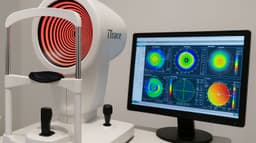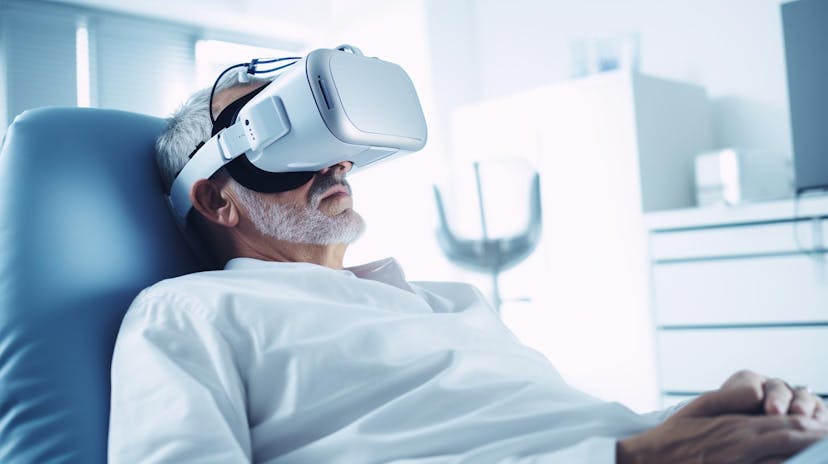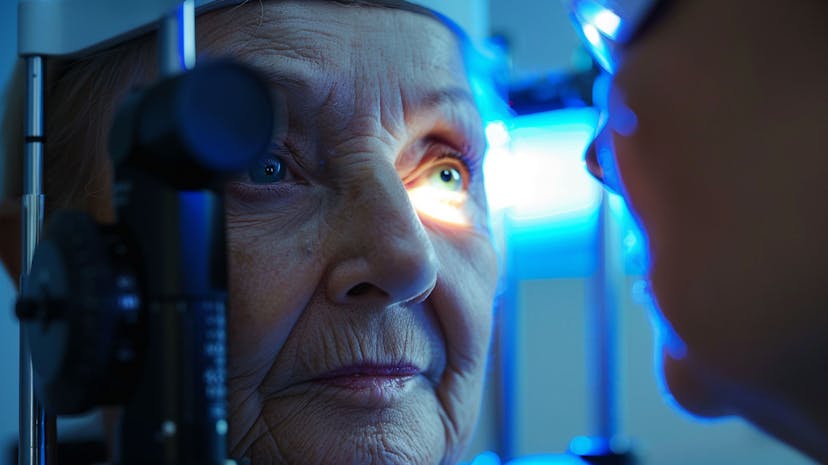
In Focus: Exploring Nystagmus And Its Impact On Vision
Welcome to the world of Nystagmus—a fascinating yet challenging vision disorder that affects individuals across the UK and beyond. Nystagmus is characterised by involuntary, rhythmic movements of the eyes, which can manifest as rapid flickering, shaking, or jerking movements. These abnormal eye movements can significantly impact visual acuity, depth perception, and overall visual function, posing unique challenges for those living with the condition.
In the UK alone, it's estimated that approximately 1 in 1,000 individuals are affected by Nystagmus, making it one of the most prevalent forms of visual impairment. While the exact causes of Nystagmus can vary, it often arises due to underlying neurological or ophthalmological conditions, such as congenital eye abnormalities, neurological disorders, or acquired injuries to the brain or inner ear. Despite its prevalence, Nystagmus remains widely misunderstood, and individuals living with the condition may face misconceptions, stigma, and challenges in accessing appropriate care and support.
As professionals, we recognise the profound impact that Nystagmus can have on our patients' lives, and we're dedicated to providing compassionate care, accurate diagnosis, and tailored treatment solutions to help them navigate the complexities of this vision disorder. Join us as we delve deeper into the world of Nystagmus, exploring its causes, symptoms, diagnosis, and treatment options, and uncovering the latest advancements in research and care for individuals living with this condition in the UK.
What Causes Nystagmus?
Nystagmus can arise from a variety of underlying factors, both congenital and acquired, that disrupt the normal functioning of the eye muscles and the brain's control over eye movements. In many cases, Nystagmus is present from birth (congenital) and may be associated with developmental abnormalities of the eyes or the part of the brain that regulates eye movements. Conditions such as albinism, congenital cataracts, optic nerve hypoplasia, and genetic syndromes like Trisomy 21 (Down’s syndrome) are associated with congenital Nystagmus. Additionally, abnormalities in the vestibular system, which controls balance and spatial orientation, can contribute to Nystagmus.
Acquired Nystagmus, on the other hand, develops later in life due to various factors such as neurological disorders, trauma, medication side effects, or inner ear dysfunction. Neurological conditions like multiple sclerosis, stroke, brain tumours, or head injuries can disrupt the neural pathways responsible for coordinating eye movements, leading to involuntary oscillations of the eyes. Similarly, certain medications, especially those affecting the central nervous system, can induce Nystagmus as a side effect. Additionally, inner ear disorders such as Meniere's disease or vestibular neuritis can disturb the balance mechanisms that influence eye movements, resulting in acquired Nystagmus. Understanding the underlying causes of Nystagmus is essential for accurate diagnosis and effective management of the condition.
Let's Understand The Symptoms Of Nystagmus.
The symptoms of Nystagmus are primarily characterised by abnormal eye movements that can manifest in various patterns and intensities. Individuals with Nystagmus may experience rapid, involuntary oscillations of the eyes, which can present as horizontal, vertical, or rotary movements or a combination of these. These eye movements may be noticeable to others or may only be detected during eye examinations by healthcare professionals.

In addition to the visible eye movements, individuals with Nystagmus may report symptoms such as blurred vision, reduced visual acuity, Oscillopsia (the illusory sensation that the stationary visual world is moving) and difficulty maintaining focus on objects. Visual symptoms may be exacerbated by factors such as fatigue, stress, or visually demanding tasks. Furthermore, individuals with Nystagmus may often tilt or turn their head to adopt a more comfortable head position, known as the "null point," where the intensity of Nystagmus is minimised and visual clarity is maximised.
Nystagmus can impact other aspects of visual function, such as spatial orientation and may have difficulty with tasks that require an accurate judgement of distance or depth. Nystagmus can affect balance and coordination, particularly in cases where it is associated with underlying vestibular dysfunction or neurological conditions. Understanding and recognising these symptoms is crucial for early detection, diagnosis, and management of Nystagmus to optimise visual function and quality of life for affected individuals.
How Is Nystagmus Diagnosed?
Diagnosing Nystagmus typically involves a comprehensive eye examination conducted by an eye care professional, such as an orthoptist or ophthalmologist. The diagnostic process aims to assess the characteristics of the abnormal eye movements, identify any underlying causes or contributing factors, evaluate the impact of Nystagmus on visual function with an aim to establish the optimum management options.
During the eye examination, the eye care professional will carefully observe the patient's eye movements in various positions of gaze, paying close attention to the pattern, direction, frequency, and intensity of the Nystagmus. Specialised tools such as a slit lamp microscope and ophthalmoscope may be used to examine the structures of the eye, including the retina, optic nerve, and eye muscles, to rule out any structural abnormalities or ocular conditions that may be contributing to Nystagmus.
In addition to the clinical examination, diagnostic tests such as visual acuity testing, refraction (spectacle prescription measurement), and visual field assessment may be performed to evaluate the patient's overall visual function and detect any associated vision problems. Imaging studies such as magnetic resonance imaging (MRI) or computed tomography (CT) scans may be ordered to assess the brain and neurological structures for any abnormalities or lesions that could be causing Nystagmus.
Overall, a thorough evaluation of the patient's medical history, symptoms, and clinical findings, combined with appropriate diagnostic tests, is essential for accurately diagnosing Nystagmus and determining the underlying cause or contributing factors. This comprehensive approach enables eye care professionals to develop an individualised treatment plan tailored to the specific needs and goals of each patient.
Treatment Options
The treatment options for Nystagmus depend on various factors, including the underlying cause, severity of symptoms, and individual patient needs. While there is no cure for the majority of Nystagmus, several management strategies aim to improve visual function, reduce symptoms, and enhance the quality of life for affected individuals.
1. Optical Correction: Prescription eyeglasses or contact lenses may be prescribed to correct refractive errors and optimise visual acuity. Additionally, specially designed low-vision aids, such as magnifying glasses or telescopic lenses, can help individuals with Nystagmus achieve better visual clarity and focus.
2. Prism Lenses: Prisms can be incorporated into eyeglasses to help stabilise and control abnormal eye movements associated with Nystagmus. By altering the path of light entering the eyes to align with the nystagmus null point, prisms can improve visual alignment, reduce oscillations, and enhance binocular vision in some cases.
3. Medications: In some cases, medications may be prescribed to alleviate symptoms associated with Nystagmus, such as dizziness, nausea, or nystagmus-induced oscillopsia (illusion of motion). Medications such as anticholinergics, benzodiazepines, or antiepileptic drugs may be used to suppress abnormal eye movements or alleviate associated symptoms.
4. Surgical Intervention: In certain cases of Nystagmus associated with structural abnormalities or muscle imbalance, surgical procedures may be considered to correct underlying anatomical issues or modify eye muscle function. Surgical options include a type of squint surgery where the eye muscles are moved and repositioned to align the eyes into the null point.
5. Assistive Devices and Supportive Services: Individuals with Nystagmus may benefit from using assistive devices and adaptive technologies to enhance daily functioning and improve quality of life. These may include large-print materials, screen magnifiers, speech-to-text software, or mobility aids to compensate for visual limitations and promote independence.
6. Certification of Visual impairment (CVI): The ophthalmologist may certify you as sight impaired or severely sight impaired, if you meet the eligibility criteria. This can act as a referral for social care assessment and plays a pivotal role accessing various services and benefits such as a blue-badge, financial assistance and mobility training.
Overall, the selection of treatment options for Nystagmus should be guided by a thorough evaluation of the patient's symptoms, functional limitations, and treatment goals, to maximise visual function and quality of life while minimising the impact of Nystagmus-related symptoms. Collaboration between eye care professionals, rehabilitation specialists, and other healthcare providers is essential to develop an individualised treatment plan tailored to the specific needs and preferences of each patient.
Latest Advancements In Research
The field of Nystagmus research has seen significant advancements in recent years, offering promising insights and potential breakthroughs that may positively impact the lives of individuals living with the condition. These advancements encompass various areas of research, including understanding the underlying mechanisms of Nystagmus, developing novel treatment approaches, and exploring innovative technologies to improve diagnosis and management.
One area of research focus is the investigation of the neurobiological basis of Nystagmus, aiming to unravel the complex interactions between the brain, visual pathways, and oculomotor eye muscle control mechanisms involved in the generation of abnormal eye movements. Advances in neuroimaging techniques such as functional magnetic resonance imaging (fMRI) and diffusion tensor imaging (DTI) have enabled researchers to study the structural and functional connectivity of the brain in individuals with Nystagmus, providing valuable insights into the neural circuits and pathways implicated in the condition.

Furthermore, researchers are exploring pharmacological interventions and targeted drug therapies aimed at modulating neurotransmitter systems, ion channels, and neuronal pathways involved in Nystagmus generation. Preclinical studies and clinical trials are underway to evaluate the efficacy and safety of novel pharmacological agents, including GABA agonists, potassium channel modulators, and neurotransmitter inhibitors, in suppressing abnormal eye movements and improving visual function in individuals with Nystagmus.
Additionally, advancements in ocular imaging technologies and digital health solutions hold promise for enhancing the diagnosis, monitoring, and management of Nystagmus in clinical practice. High-resolution imaging techniques such as optical coherence tomography (OCT) and adaptive optics imaging enable clinicians to visualise and quantify structural changes in the retina, optic nerve, and ocular tissues associated with Nystagmus, facilitating early detection and personalised treatment planning.
The integration of wearable devices, mobile applications, and telemedicine platforms offers new opportunities for remote monitoring, home-based therapy, and patient engagement in vision rehabilitation. These technologies empower individuals with Nystagmus to actively participate in their care, track their progress, and access support resources from the comfort of their homes, thereby improving access to specialised care and enhancing overall treatment outcomes.
Overall, the latest advancements in Nystagmus research hold great promise for advancing our understanding of the condition and transforming the landscape of diagnosis, treatment, and support for individuals living with Nystagmus. By harnessing the power of interdisciplinary collaboration, cutting-edge technologies, and innovative therapeutic strategies, we can strive towards improving the lives and visual outcomes of individuals affected by Nystagmus, ultimately enhancing their quality of life and independence.
How Can My-iClinic Help?
Discover a brighter future with My-iClinic. Our team of dedicated specialists are committed to providing compassionate, personalised care. If you or a loved one are living with Nystagmus, take the first step towards improved vision and quality of life by scheduling a consultation with us today. Together, let's embark on a journey towards better vision and a brighter tomorrow. Your vision is our priority at My-iClinic.
Find out more by Speaking to our team









